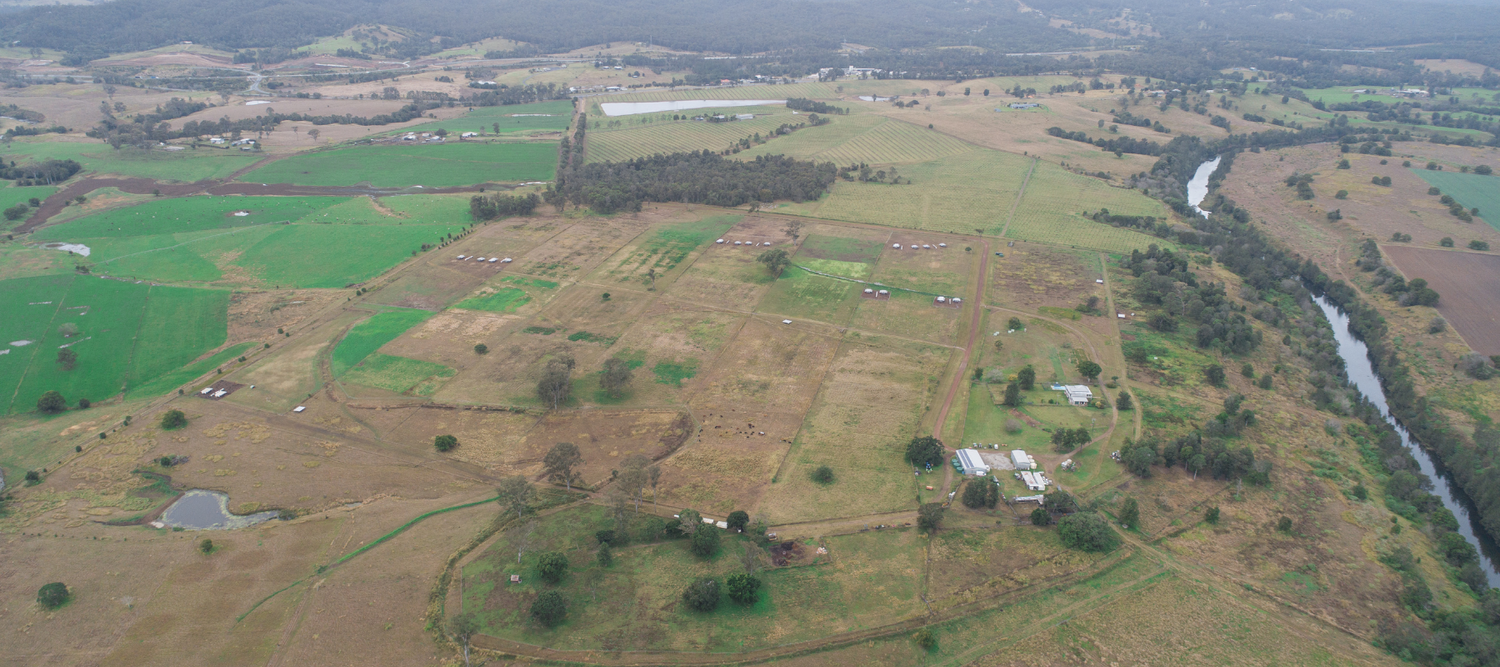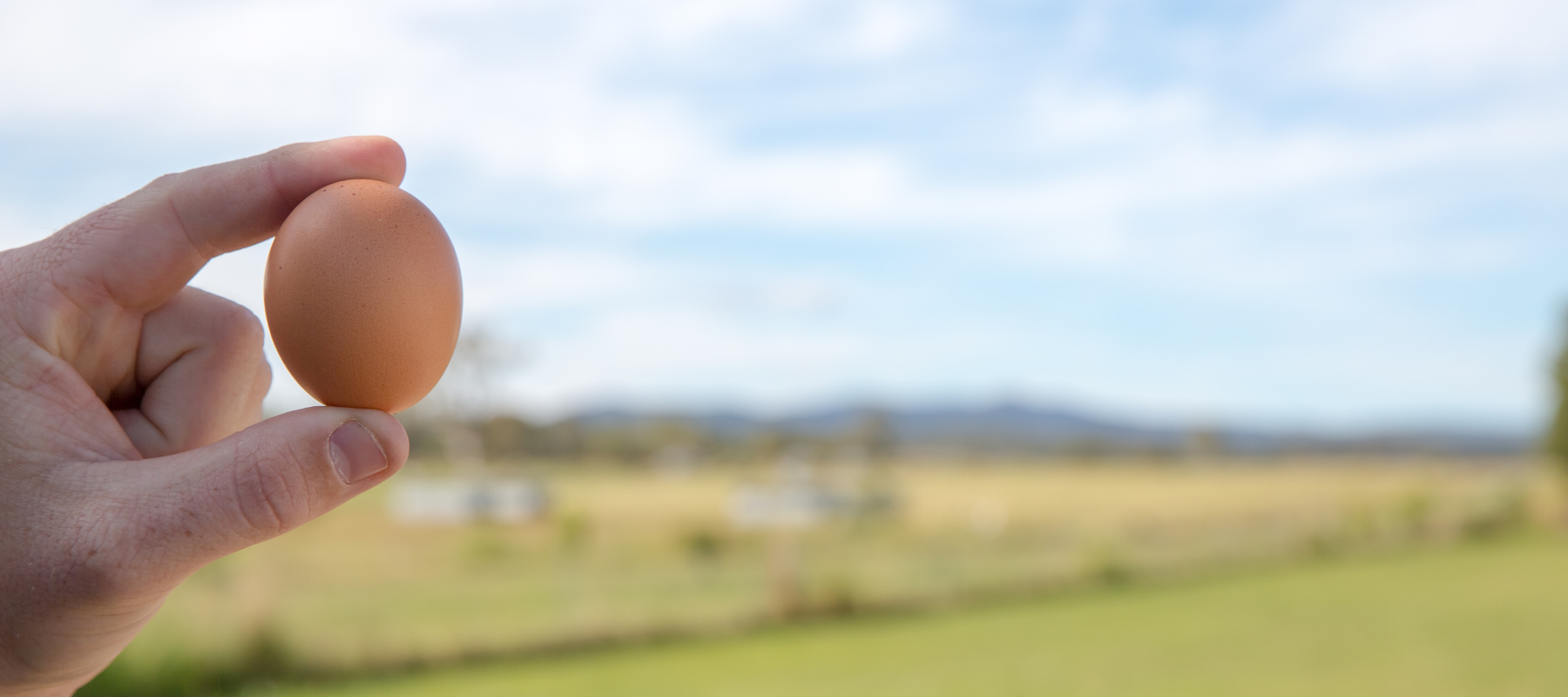When we first arrived at Forage Farms, the cowpats were like concrete. The cattle here were being drenched, so their manure was full of toxins. When the dung beetles arrived a few years later, we knew things were looking up. Our chemical-free environment was allowing these very important beetles to thrive so that they could do their job of turning manure into nutrients for our soil, creating more carbon and more food for our plants to consume.
This same potential for fertility was also obvious underneath the few spread out gum trees that existed when we purchased the farm in 2017. Thanks to bird droppings and partial shade, clumps of lush, tall green panic grass had established itself in these areas - so we knew that this could be replicated if the right environment was provided.
Adopting the principle of bird droppings, we introduced chickens to increase fertility so the soil was in a condition that we could sow into. 90 percent of the farm was covered in Bahia grass, which we knew was not ideal for sheep and cattle. Our goal was to create a diverse pasture, so we set about planting up to 15 species of pasture plants at a time. By introducing legumes, brassicas, herbs, and other broadleaf plants, we were able to provide better foraging for our hens.
Three years after moving to Forage Farms, we started to see a dramatic and exciting change in our pastures. In fact, it had happened faster than we expected. There was green panic growing everywhere alongside plantain, legumes, Rhode’s grass, pea plants and weeds. In this newly diverse environment, we were confident that enough nutrition would be available to introduce sheep and cattle.
Slowing the flow of water with our natural sequence farming methods has had a measurable and positive impact on our landscape. By building contours and planting, we could significantly reduce water loss, which was evident when the big rains came. In 2017 when the downpour came, we couldn’t slow the water in the gullies. Watching your topsoil and water heading for the sea is a frustrating event! Two years later, post contour construction, we had 100ml in two days. Not a single drop of water or topsoil was lost. Where the water landed was where it stayed – a truly happy event knowing that our plants would have access to the water and soil nutrients for much longer.
Bit by bit Forage Farms has come back to life, and this is also reflected in the biodiversity of our fauna. When we first arrived, the farm was teeming with cane toads at night. At about the same time the plants changed, we noticed that finding a toad was not nearly as easy. New animals had arrived to redress the balance. The cane toad can’t rule in a diverse environment. Bandicoots, small singing birds, crows, eagles, pythons and even echidnas are now seen regularly – they know Forage Farms is full of good food and have joined in on our ecosystem.
Our chemical-free, fertile landscape has now matured to a stage that can sustain not only chickens and pigs but lamb and beef production. We don’t vaccinate or drench our animals once they arrive at the farm, and we have never had any issues such as ticks on the cattle. The chickens eat the ticks, and it all balances out. Our animals remain robust and disease resistant by rotating and providing access to diverse, healthy food sources.
The result is food that is the very best it can be. When you purchase an egg, a chook, pork, lamb, or beef from Forage Farms, you can be confident that it will be nutritious and tasty – no-nonsense, no nasties.




